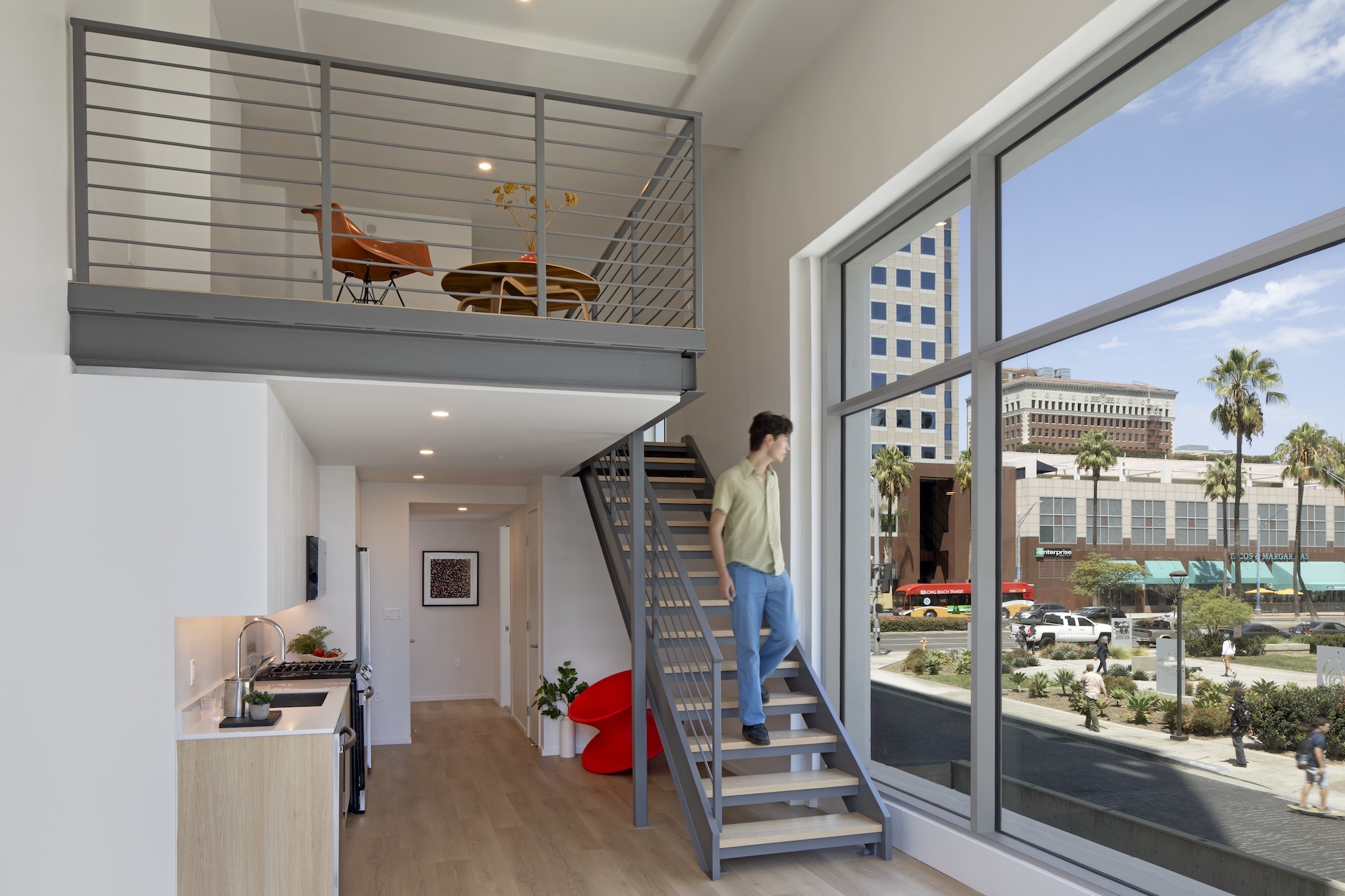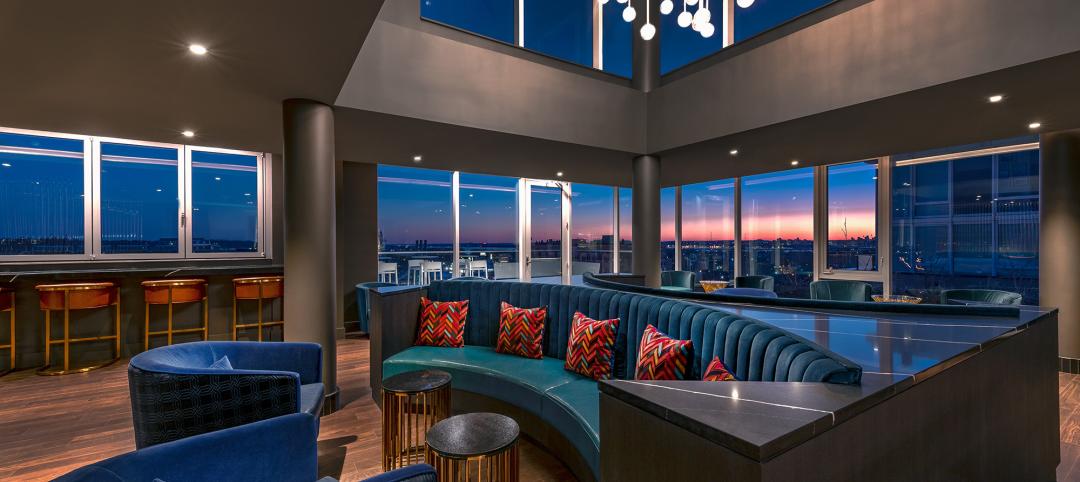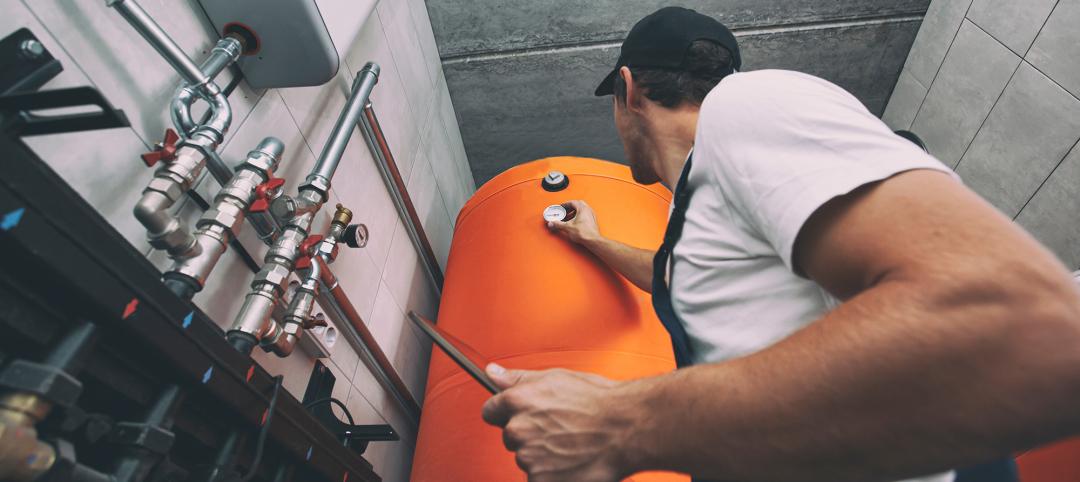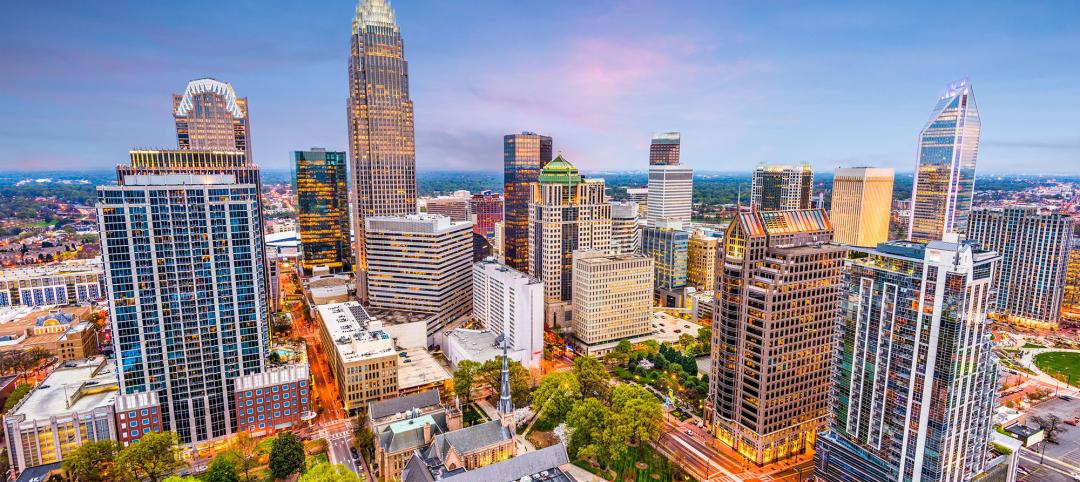A project to convert an underperforming mid-century office tower in Long Beach, Calif., created badly needed market rate housing with a significantly lowered carbon footprint. The adaptive reuse project, composed of 203,177 sf including parking, created 106 apartment units out of a Class B office building that had been vacant for about 10 years.
The $44 million 200 West Ocean project repurposed existing steel and concrete instead of trashing them, resulting in a 69% reduction in embodied carbon, an estimated 3.19 million Kg of CO2, and prevented some 26 million pounds of material from entering the waste stream.
The design included cutting slots into existing concrete to double the size of all windows, increasing natural daylight, and maximizing views for residents. This transformed an otherwise dark, insular, and flat concrete facade into an inviting, articulated building, producing a more appealing connection between the city fabric and residents.
The massing and floor plans of the building were altered to carve out balconies and outdoor terraces from the façade. More than 75% of the units have substantial natural ventilation and direct outdoor patios, allowing residents to benefit from cool ocean breezes. Recessed patios on the south side of the building reduce heat gain and maximize ocean views.
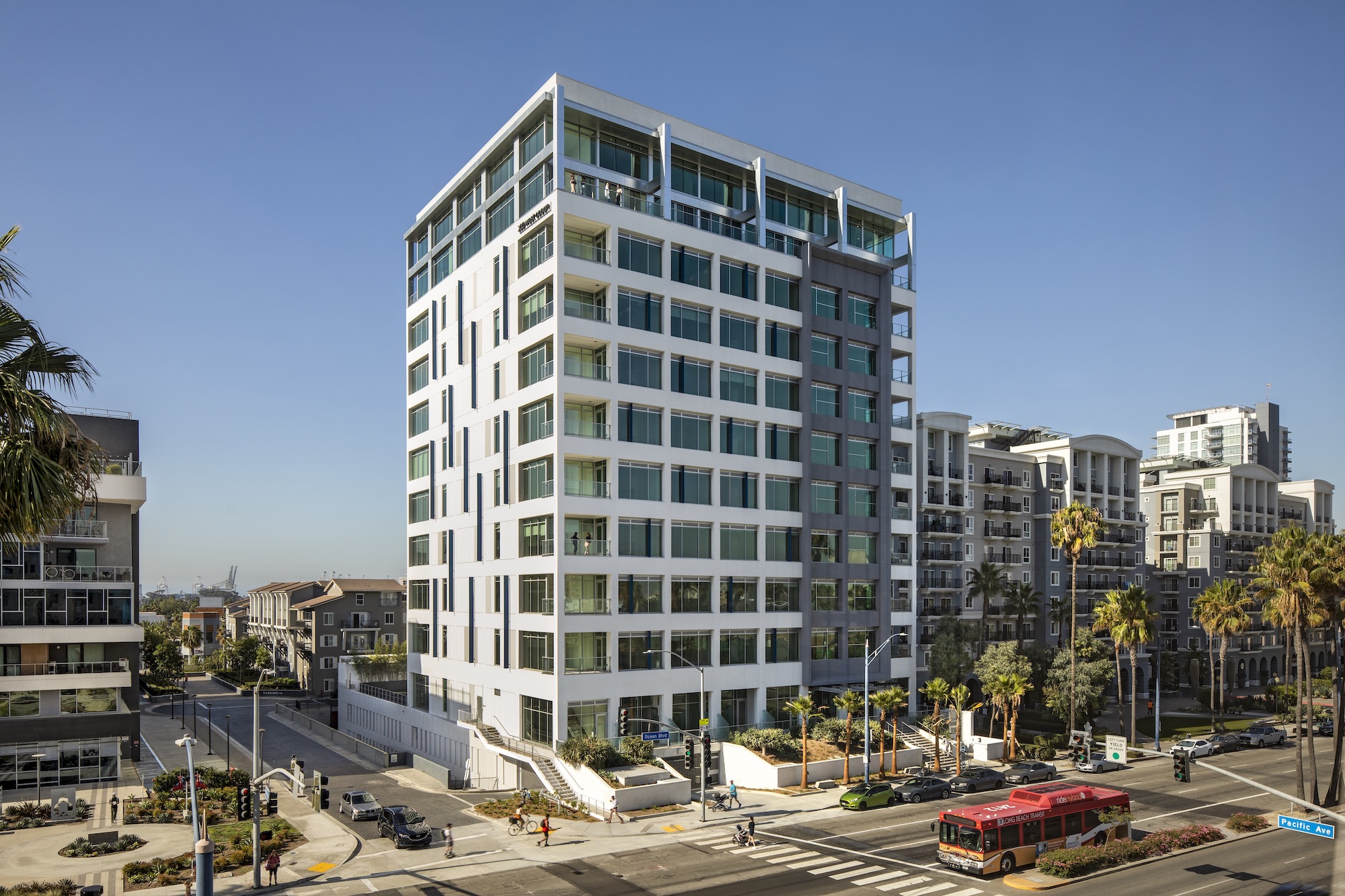
Strengthening part of the parking structure roof enabled design firm Studio One Eleven to add a community room, pool, spa, and barbecue area. Outdated mechanical equipment was removed from the roof of the main building, allowing transformation of the rooftop space into eight two-story penthouse townhomes.
The rooftop stretches beyond the glass facade of the top two stories and is lit from below at night. Interior atriums were included in the four inbound penthouse units. By creating an opening in the rooftop, bedrooms without direct windows could have natural light and ventilation as well as dramatic views through the double-height living room beyond.
Residents have just a five-minute walk to public transit that connects to downtown Los Angeles. The front sidewalk connects directly to the Pike, a promenade of dining, retail, and the Long Beach Convention Center.
On the project team:
Developer: Greystar
Design architect: Studio One Eleven
Architect of record: Studio One Eleven
MEP engineer: Donald Dickerson Assoc.
Structural engineer: Labib Funk and Assoc.
Civil engineer: KPFF
Landscape Architect: Mark Tessier Landscape
Construction Manager: JR van Dijs
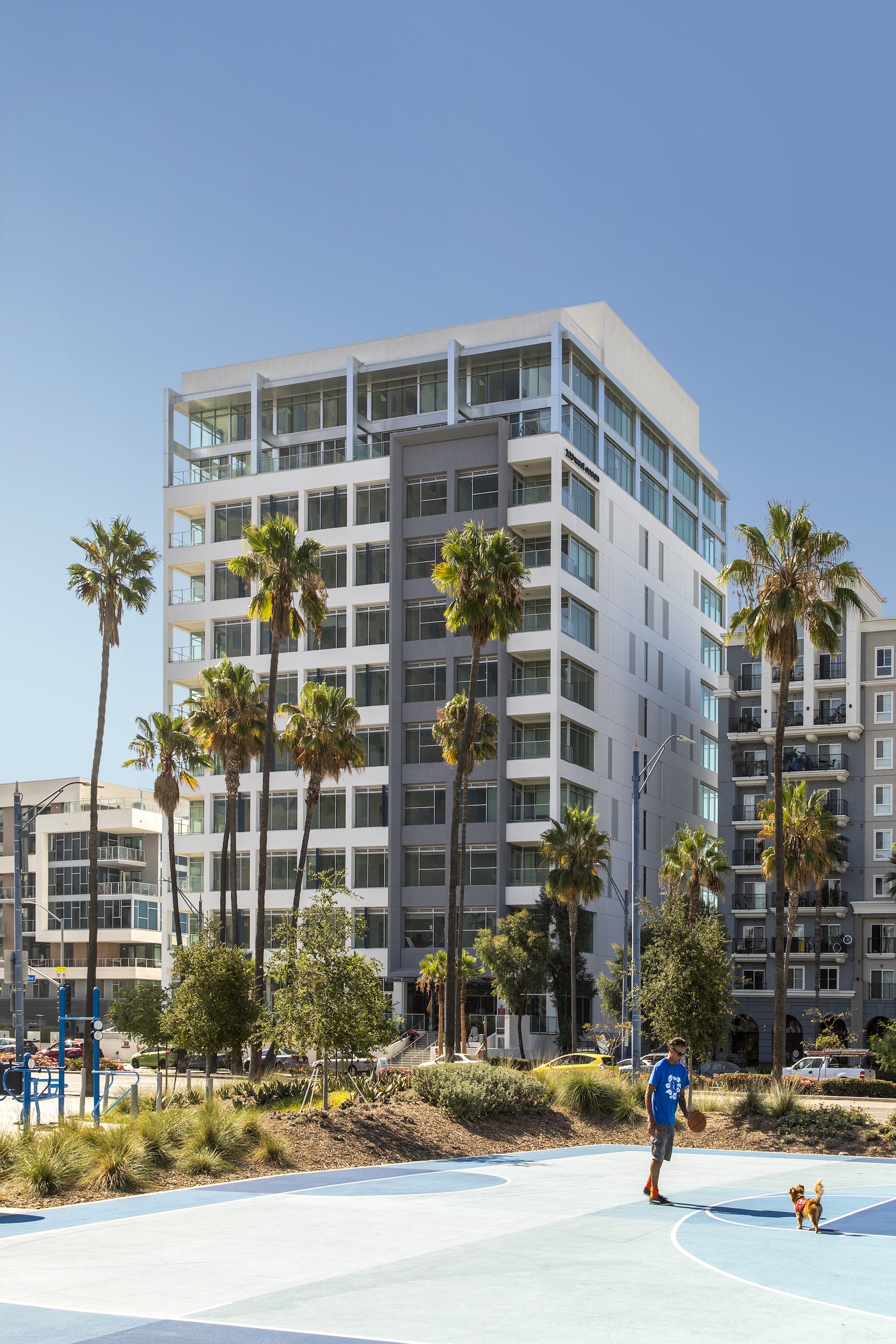
Design essay from architect Studio One Eleven
Here are more details on the project from architect Studio One Eleven:
Originally designed by AC Martin and Associates in 1967, this Class B building was commissioned by the General Telephone Company of California, the largest independent telephone company in the United States during the days of the Bell System, to serve as the headquarters for the southern region. Studio One Eleven was commissioned to repurpose this oceanview building as market rate housing.
Studio One Eleven’s design pays homage to the building’s mid century architectural history and introduces renewed vibrancy with contemporary touches. The original building felt insular with an impenetrable facade and dark windows, so the renovation sought to reverse this relationship with the urban fabric and to invite views and connectivity. The addition of a gray vertical frame over the entry accentuates the building’s presence on Ocean Boulevard. To capitalize on the views and to allow more natural lighting, Studio One Eleven doubled all existing windows in size and cut slots in the concrete bulkhead to make them larger. The outdated rooftop mechanical equipment was removed and two new stories were added to give the building an iconic appearance, furthering the identity of 200 Ocean within a burgeoning downtown.
By drastically changing the floor plans and changing the massing of the building, carving outdoor balconies and terraces from the facade of the building, Studio One Eleven was able to create voluminous, varied, and light-filled units that each have access to the outdoors. The new residential units will have exposed concrete walls in the corridors, tall ceilings and many with balconies with either ocean or city views. Overall, lower units feel connected to the street while upper units are connected to views.
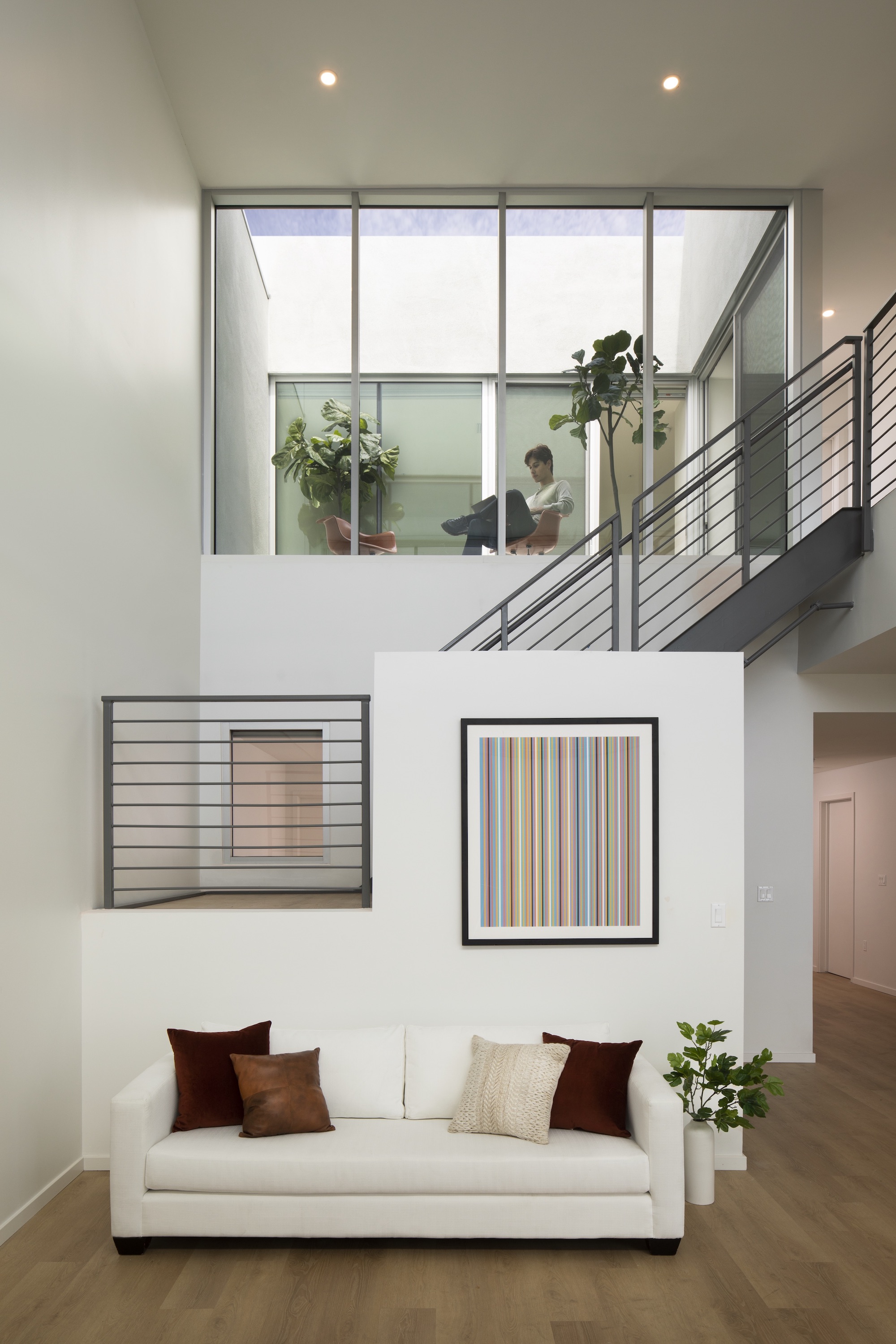
Utilizing the tall ground floor that was originally designed for retail, Studio One Eleven created double height lofts with mezzanines and floor to ceiling windows. On the top floors, inbound townhome units feature interior atriums, created by carving openings in the roof and allowing for interior bedrooms to have direct access to natural light and ventilation. Above the fourth floor, residents have unobstructed views southward over the waterfront, Queen Mary, and Catalina Island beyond, and northward towards downtown Los Angeles and San Gabriel Mountain range beyond. By strengthening part of the parking structure roof, Studio One Eleven was able to add an expansive ground floor amenity deck that features a pool deck and spa, community rooms, and a barbecue area for residents.
Minimizing the overall quantity of material used in a building, especially high-embodied-carbon materials such as concrete, steel, and petrochemical-based insulation products, can significantly reduce the overall embodied carbon of a project. By re-using the existing building for a new purpose, the project results in 69% lowered embodied carbon and 3.19M Kg CO2e emissions avoided, as well as over 26M lbs diverted from the waste stream.
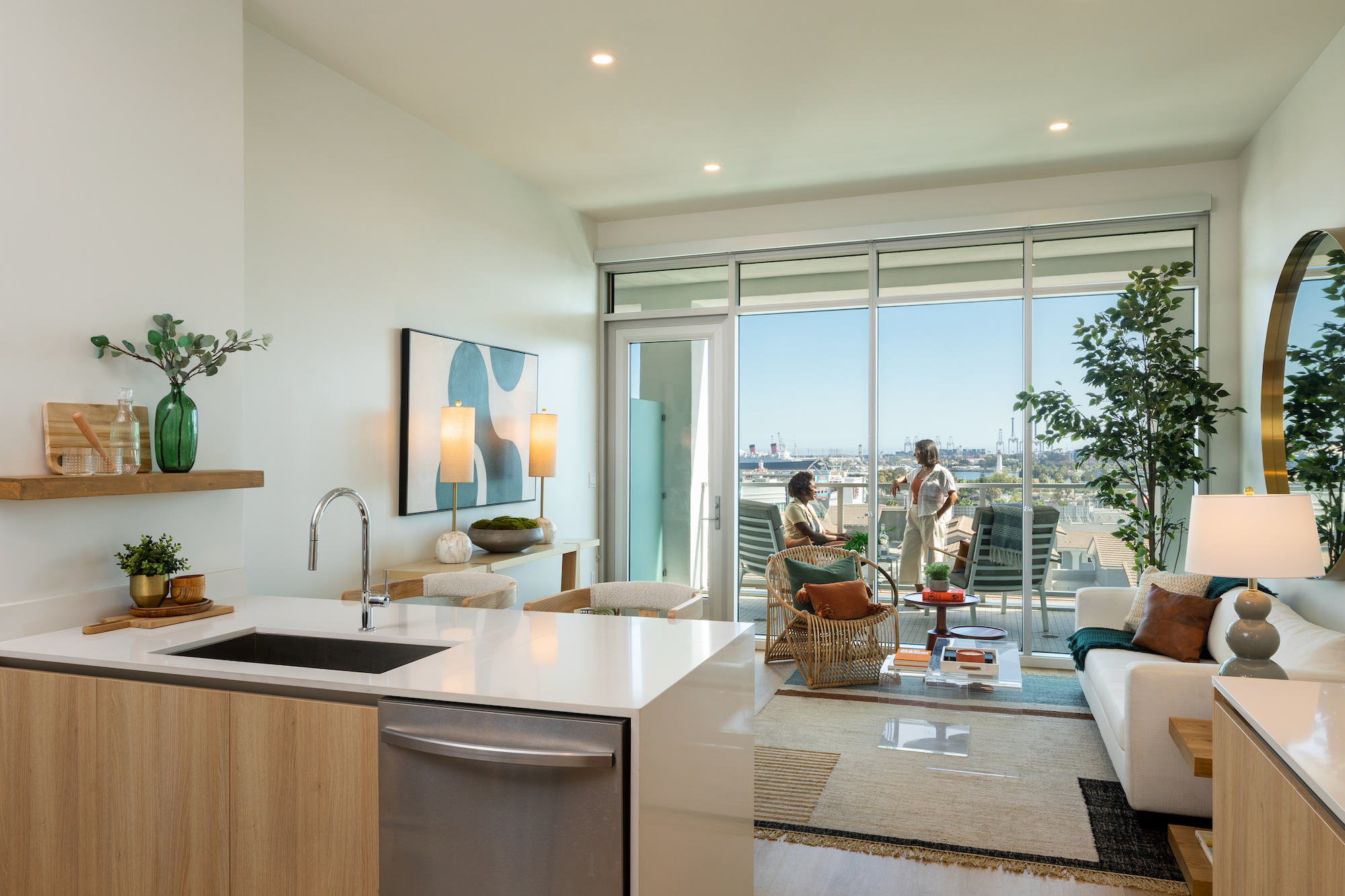
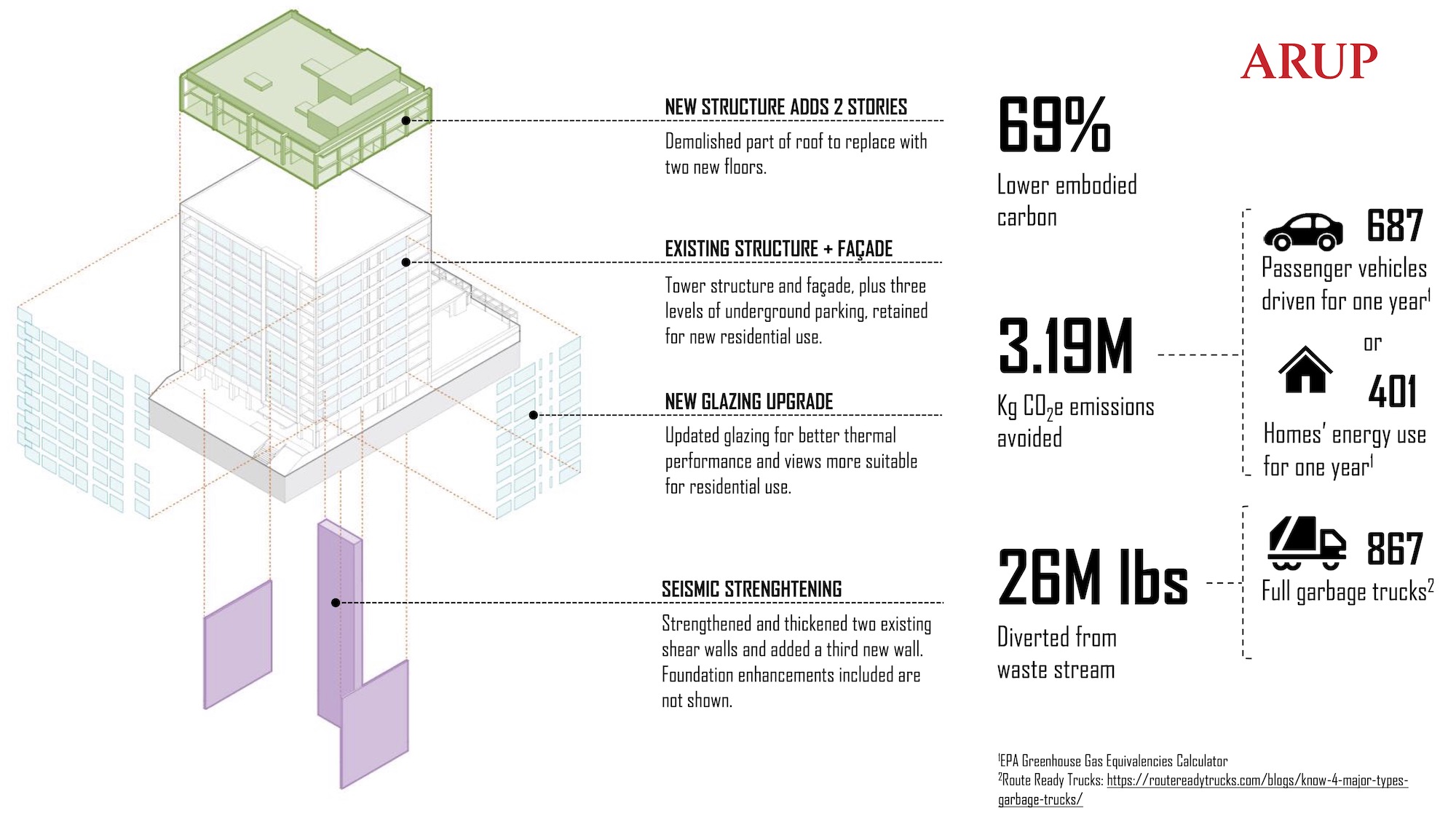
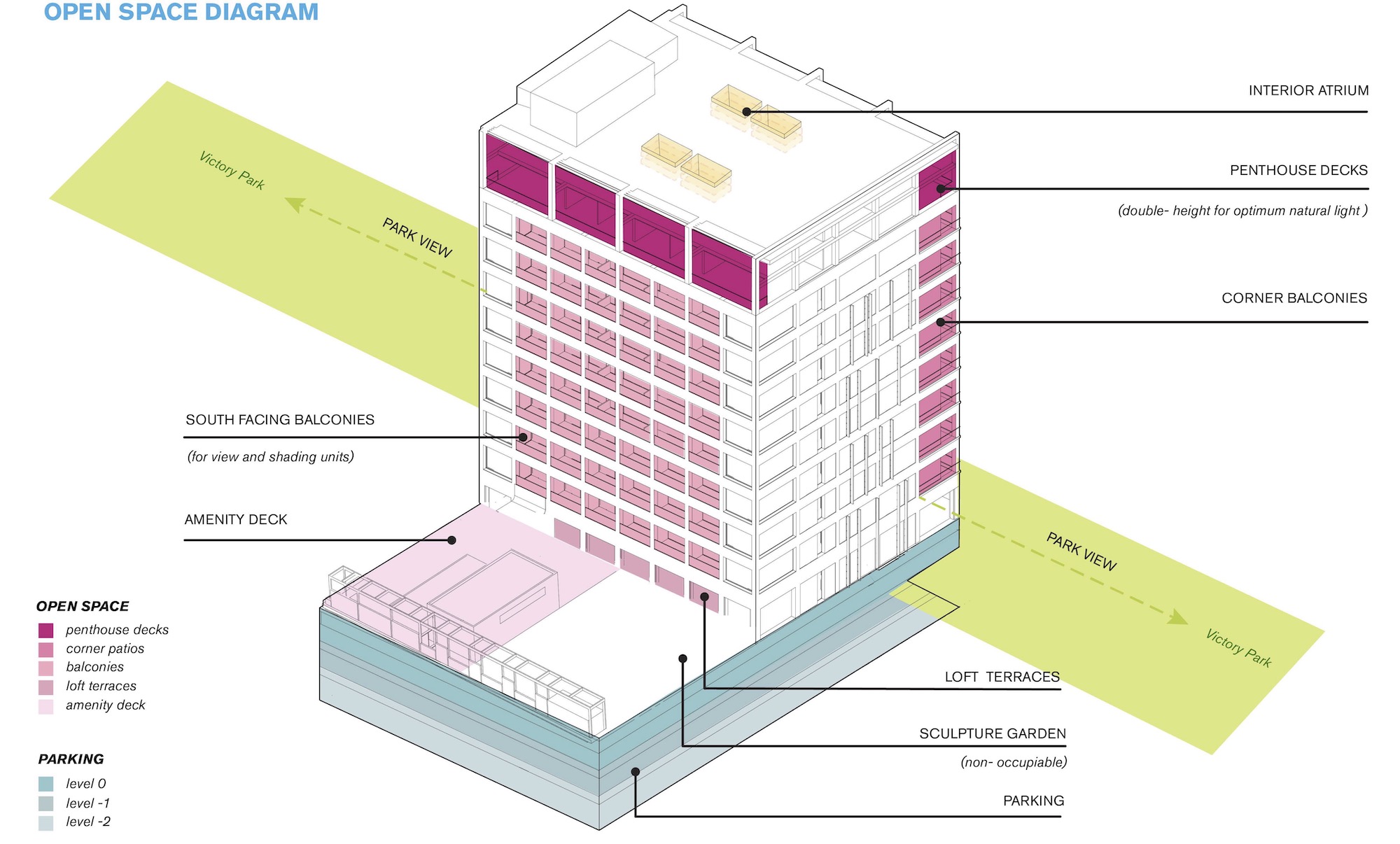
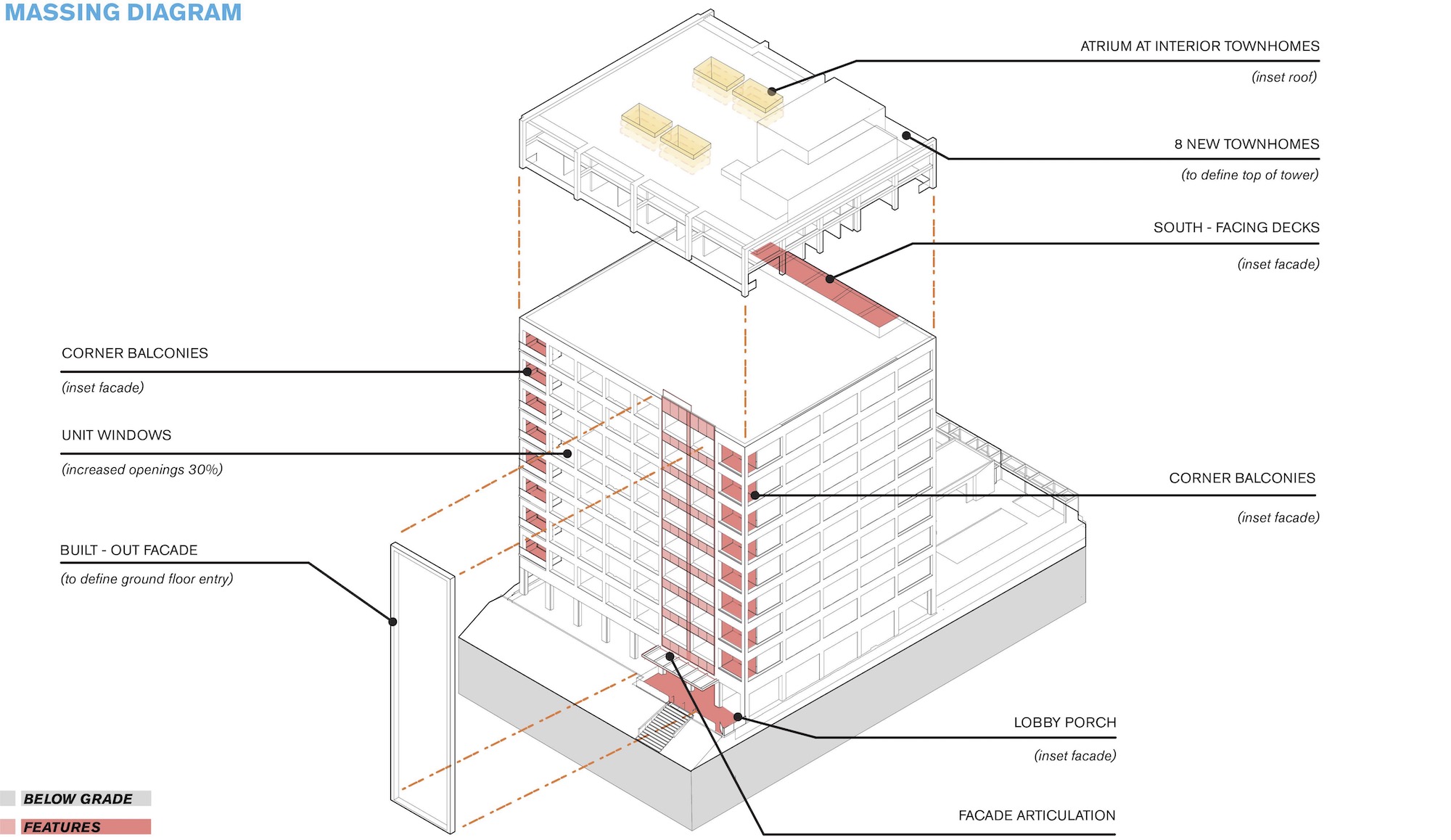
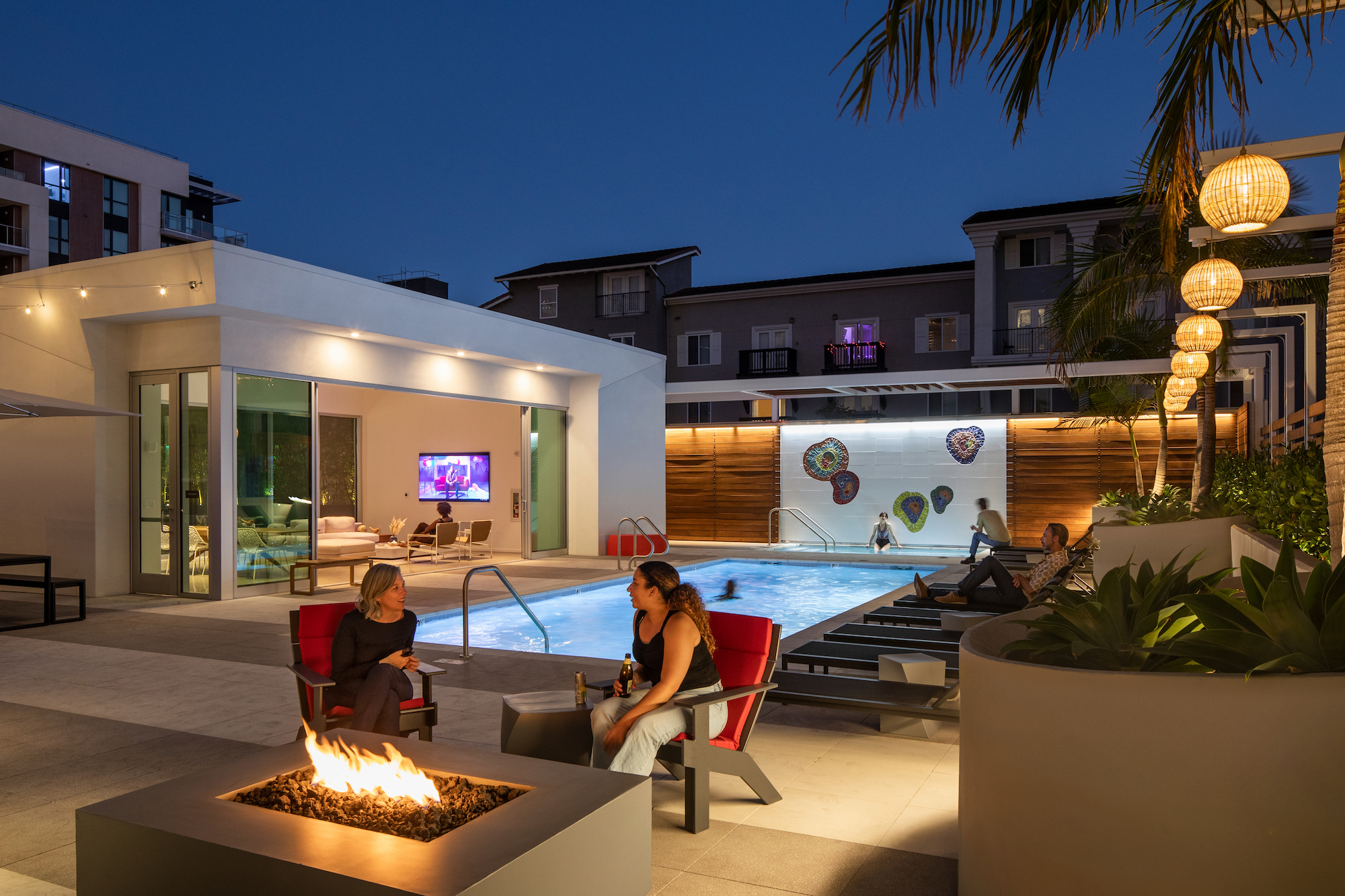
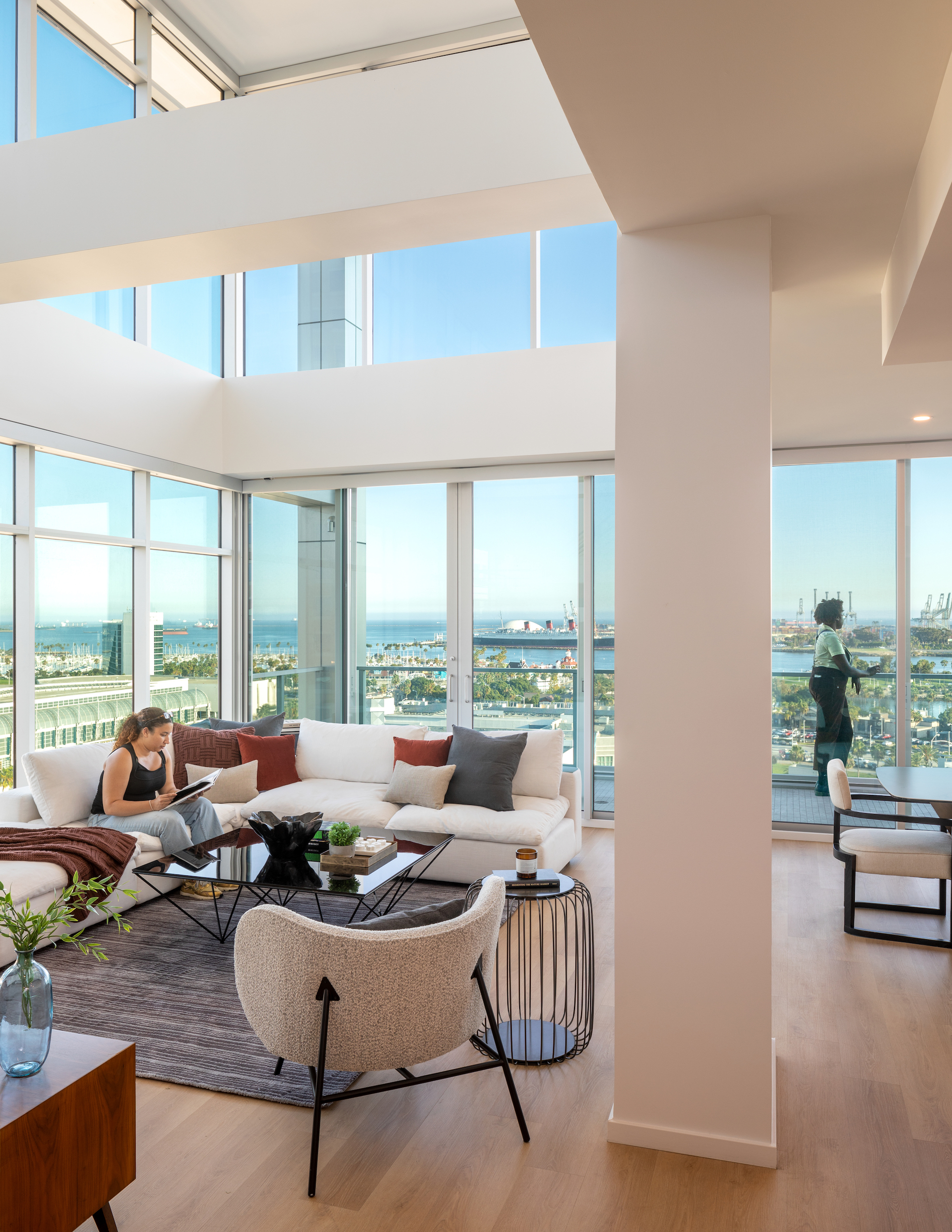
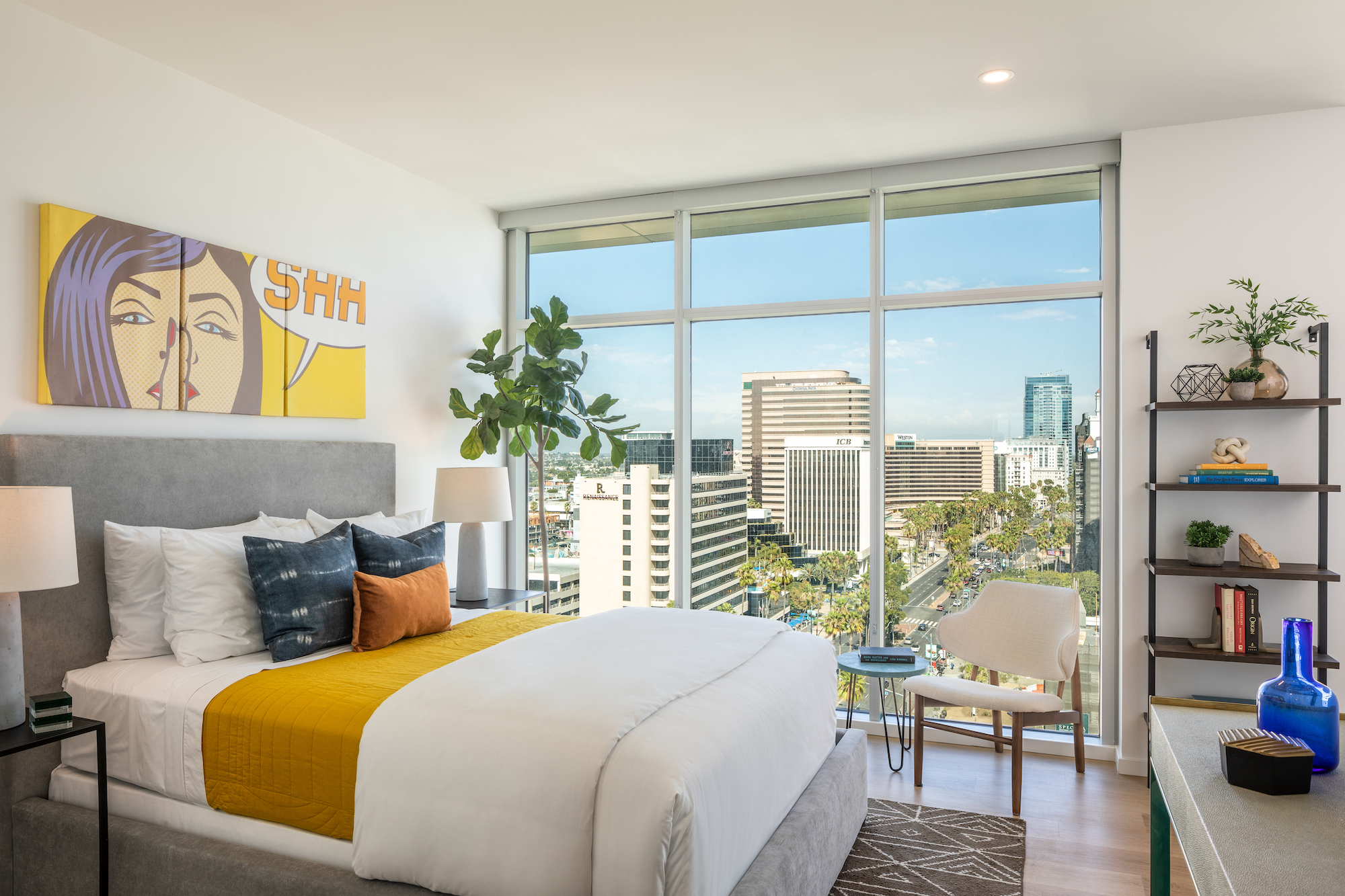
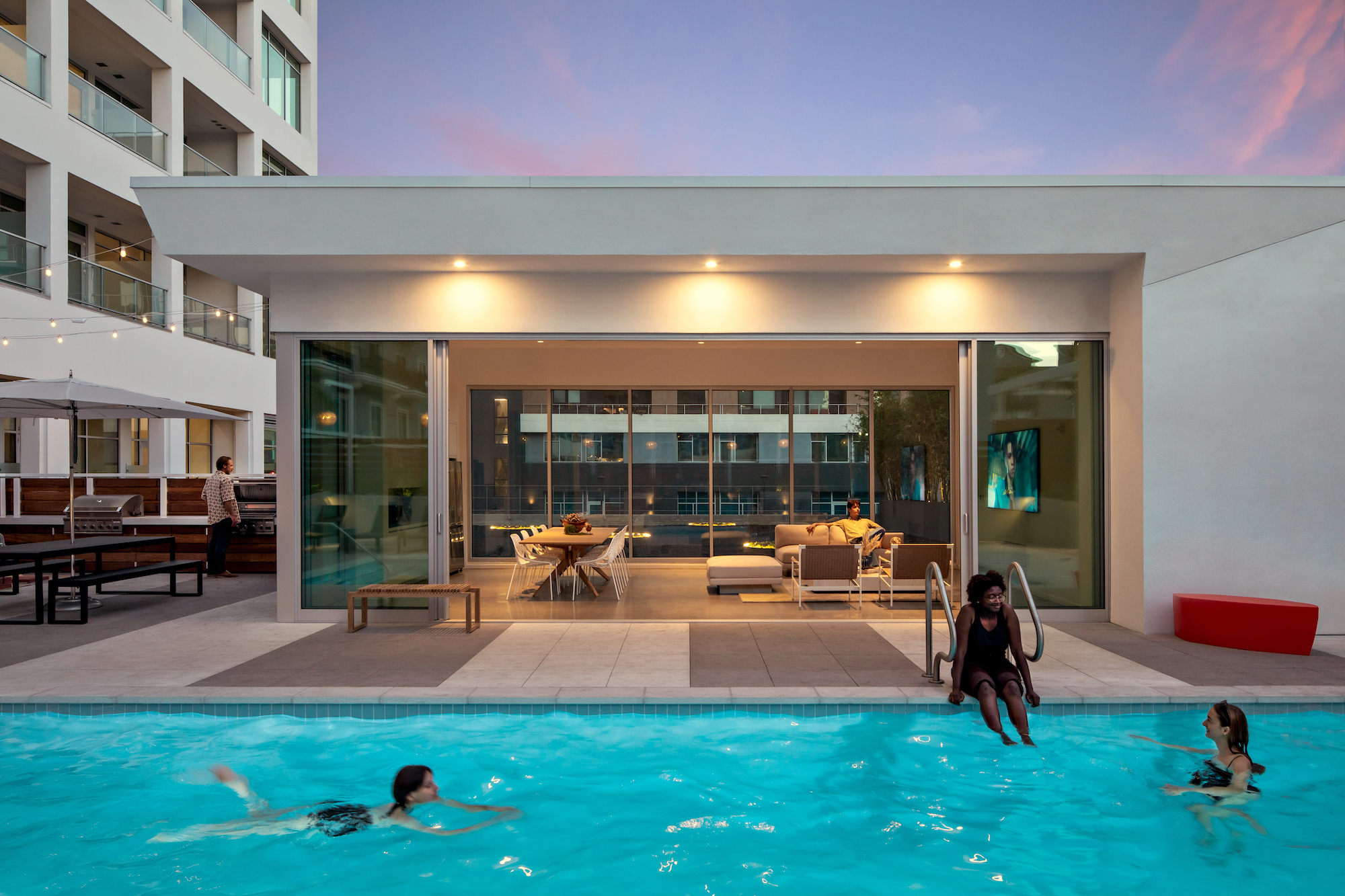
Related Stories
Building Tech | Feb 20, 2024
Construction method featuring LEGO-like bricks wins global innovation award
A new construction method featuring LEGO-like bricks made from a renewable composite material took first place for building innovations at the 2024 JEC Composites Innovation Awards in Paris, France.
Student Housing | Feb 19, 2024
UC Law San Francisco’s newest building provides student housing at below-market rental rates
Located in San Francisco’s Tenderloin and Civic Center neighborhoods, UC Law SF’s newest building helps address the city’s housing crisis by providing student housing at below-market rental rates. The $282 million, 365,000-sf facility at 198 McAllister Street enables students to live on campus while also helping to regenerate the neighborhood.
Multifamily Housing | Feb 16, 2024
5 emerging multifamily trends for 2024
As priorities realign and demographic landscapes transform, multifamily designers and developers find themselves in a continuous state of adaptation to resonate with residents.
MFPRO+ News | Feb 15, 2024
UL Solutions launches indoor environmental quality verification designation for building construction projects
UL Solutions recently launched UL Verified Healthy Building Mark for New Construction, an indoor environmental quality verification designation for building construction projects.
MFPRO+ News | Feb 15, 2024
Nine states pledge to transition to heat pumps for residential HVAC and water heating
Nine states have signed a joint agreement to accelerate the transition to residential building electrification by significantly expanding heat pump sales to meet heating, cooling, and water heating demand. The Memorandum of Understanding was signed by directors of environmental agencies from California, Colorado, Maine, Maryland, Massachusetts, New Jersey, New York, Oregon, and Rhode Island.
MFPRO+ News | Feb 15, 2024
Oregon, California, Maine among states enacting policies to spur construction of missing middle housing
Although the number of new apartment building units recently reached the highest point in nearly 50 years, construction of duplexes, triplexes, and other buildings of from two to nine units made up just 1% of new housing units built in 2022. A few states have recently enacted new laws to spur more construction of these missing middle housing options.
Multifamily Housing | Feb 14, 2024
Multifamily rent remains flat at $1,710 in January
The multifamily market was stable at the start of 2024, despite the pressure of a supply boom in some markets, according to the latest Yardi Matrix National Multifamily Report.
Sustainability | Feb 7, 2024
9 states pledge to accelerate transition to clean residential buildings
States from coast to coast have signed a joint agreement to accelerate the transition to pollution-free residential buildings by significantly expanding heat pump sales to meet heating, cooling, and water heating demand in coming years.
Multifamily Housing | Feb 5, 2024
Wood Partners transfers all property management operations to Greystar
Greystar and Wood have entered into a long-term agreement whereby Greystar will serve as property manager for all current and future Wood developed and owned assets.
Industry Research | Jan 31, 2024
ASID identifies 11 design trends coming in 2024
The Trends Outlook Report by the American Society of Interior Designers (ASID) is the first of a three-part outlook series on interior design. This design trends report demonstrates the importance of connection and authenticity.


